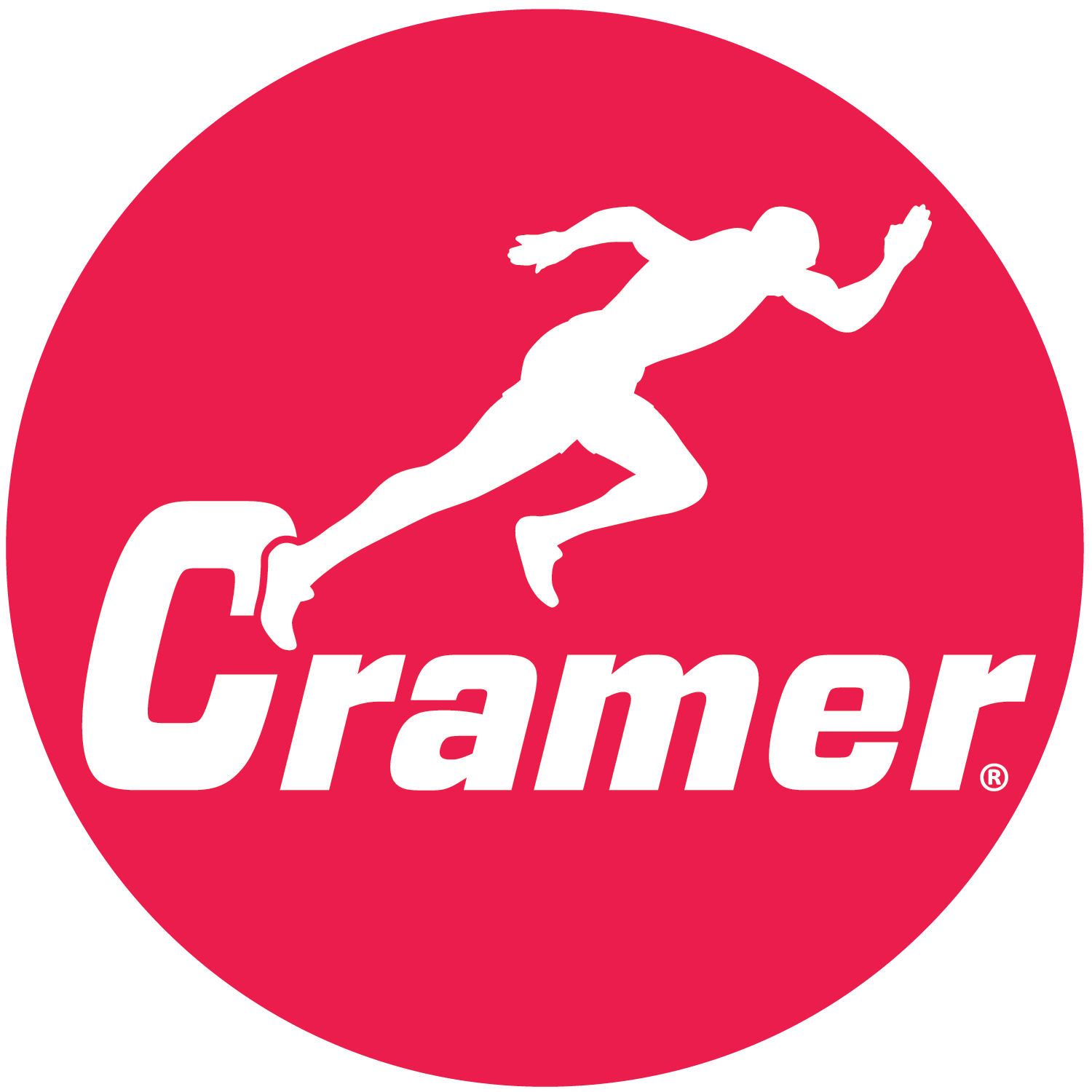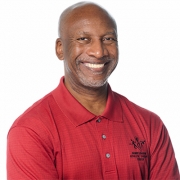ATHLETIC TRAINER PROFILE: Benny Vaughn
Benny Vaughn is a licensed massage therapist and ATC, and owner of Benny Vaughn Athletic Therapy Center in Fort Worth, TX. He grew up in Georgia, and attended the University of Florida on an athletic scholarship to run track. Benny became intrigued by the concept of massage therapy for athletes in 1972, after reading an article in Track and Field News that described the use of massage therapy in Europe to help runners with recovery and performance. He enrolled in a 10-month training program at the American Institute of Massage in Gainesville, Florida (now called the Florida School of Massage), and then completed a one-year apprenticeship.
After working as a massage therapist for 10 years, Benny earned a degree in health education, specializing in health promotion and wellness. At the same time, he completed the requirements to become an ATC. “I was especially interested in the orthopedic assessment skills and knowledge of injury conditions that athletic trainers see,” Benny explains. “It was important to me to learn this so I could recognize these conditions and know when to refer my clients to other sports medicine professionals.”
A REMARKABLE MODALITY FOR ATHLETES’ PERFORMANCE AND RECOVERY
Massage therapy is a remarkable modality for preparing athletes for performance and competition, as well as an aid in recovery,” Benny says. “Used during performance preparation, massage helps athletes focus their bodies and minds prior to competition. Sometimes the touch is applied through the athlete’s warm-up clothing, and sometimes it’s directly on the skin. These are short sessions, maybe 5 or 10 minutes, using rhythmic massage. That rhythmic preparation is key to athletes being physically and mentally prepared to compete. For some athletes, these quick pre-performance massages become an important part of their sports ritual. During recovery, long massage strokes are used to reduce any edema that occurs from training. It also relaxes the athlete after the intensive stress on the body and mind from training and competition. It doesn’t matter what the sport is—recovery is always important.”
Benny’s sports massages focus on an athlete’s fascia, which envelops all skeletal muscle and muscle fibers. He explains, “Fascia is indigenous throughout the body, and it gives the body shape and form and it affects function as well. It’s important to consider fascial anatomy when assessing an athlete, to best determine what hands-on strategy will be most effective for the complaint the athlete presents. With this knowledge, you begin to look at the body very differently than when only the skeletal muscle function is considered. The tension and stress along kinetic lines of motion that the athlete has to facilitate for their given sport must be examined. So fascial anatomy is critical in my mind, especially when helping athletes perform at their very best.”
AN ASSET TO ATHLETIC TRAINERS
Athletic trainers who have learned massage techniques gain an increase in the sensitivity of their touch, thus improving their orthopedic assessment skills improve. Benny says he first learned this in the 1980s at the University of Florida. “I was on staff as an assistant athletic trainer and was responsible for massage therapy services for the Florida Athletic Association. We offered massage therapy classes and encouraged all of the athletic trainers and graduate assistants there to participate. It was the Director of Sports Medicine who first noticed that the orthopedic assessment skills improved in the athletic trainers with massage therapy training, because their touch sensitivity was much better. This is a byproduct we weren’t expecting or looking for. But once you start giving massages regularly, you feel things more acutely when touching a knee or hamstring, for example.”
Though massage is physical work, Benny says that with formal massage therapy training you learn to use your body weight and body mechanics to apply appropriate pressure to the client. “When done correctly,” he says, “ massage is not painful for the athletic trainer's body and it’s as easy to do as applying electrical stimulation or an ice pack. And touch is usually a more effective way to treat an athlete lying on a table.”
Athletic trainers interested in incorporating massage into program should consider enrolling in a massage therapy training program, Benny says, or hiring a massage therapy instructor who can work with you, your staff and your athletes for a number of weeks and months or enroll in advanced orthopedic sports massage courses. “All too often, athletic trainers think that massage therapy is a simplistic activity that anyone can do, and that is so far from the truth. Massage therapy operates from a physical plane, but also—and very importantly—from an energetic plane. Athletes will know and feel immediately if you know what you’re doing, or if you don’t. So asking a student athletic trainer with no massage training to massage an athlete, or give a rub down, is not massage. It is better to include a licensed and certified massage therapist on your staff.”
Benny has many clients who are professional athletes. “Professional athletes have figured out the difference that massage makes. Many of the professional teams find and check out good, licensed massage therapists in their area and provide those recommendations to their athletes. This is the model that most athletic trainers are using at the pro level. If you’re interested in finding good massage therapists for your athletes, look for those who identify themselves as doing orthopedic or sports massage, deep tissue massage, neuromuscular therapy, or myofascial release. These usually indicate that the person has had some advanced training. Also, those LMTs who are board certified and state licensed indicate high levels or proficiency.”
SUCCESS WITH THE U.S. TRACK AND FIELD AND OLYMPIC TEAMS
Since 2003, Benny has been involved with the U.S. Track and Field team, and frequently travels with the team. He recently returned from eight days with them at the World Relay Championships in Nassau, Bahamas. “There were 44 countries represented,” Benny says, “and the U.S. team won seven out of the ten relay events. They probably would have won two others that they were leading, but were disqualified because of baton drops. So we came very close to winning 9 of 10 relays. These athletes receive regular massages during training and competition, and as part of their recovery.” It’s also important to note that massage therapists were officially included into the U.S. Olympic program with the 1996 Atlanta Olympics, thanks to Benny’s efforts while serving as manager of athlete medical services for the Atlanta Committee for the Olympic Games.
HIGH ETHICAL STANDARDS LEAD TO GREAT SUCCESS
An entire article could be devoted to Benny’s many awards and achievements. They include the National Meritorious Award from the American Massage Therapy Association in 1989; the International Achievement Award from the Florida State Massage Therapy Association in 1996; and an Award of Excellence from the NATA in 1999 for his educational video, “Massage for Sports Health Care.” In the year 2000, Massage Magazine, an international publication, named Benny as one of the 50 most influential professionals of hands-on, soft-tissue therapy, in the world, over the past 100 years. And in 2012, Benny received the ONE Concept Lifetime Achievement Award for his contributions to the massage therapy profession.
The recognition Benny has received is even more impressive when one considers the hurdles he faced when starting out as a male African American massage therapist in the early 1970s. “I was practicing in the Deep South,” he says, “and faced racial and homophobic challenges. For the first two years, I only took male clients that were willing to receive a massage from a male therapist, and it was several years before I considered taking women as clients. And once I did, for quite some time, I only accepted female clients who were referred to me by a male client.”
He persevered, though, always adhering to the highest ethical and professional standards. “I never wavered on this and never will,” says Benny, “and that—combined with excellent results—is how my reputation grew. By the early 80s my race started to be less of an issue.”
Benny
estimates he’s given close to 300,000 massages since he started in the
profession 41 years ago. “That’s a lot of touching peoples’ lives,” he
says, “and there’s a lot of responsibility that comes with that. I am
still very curious about every client I see—curious to learn what might
be creating pain, apprehension, or stress in their lives and how touch
can help heal them and make a positive difference. Touch is a powerful
vehicle for giving people hope.”

